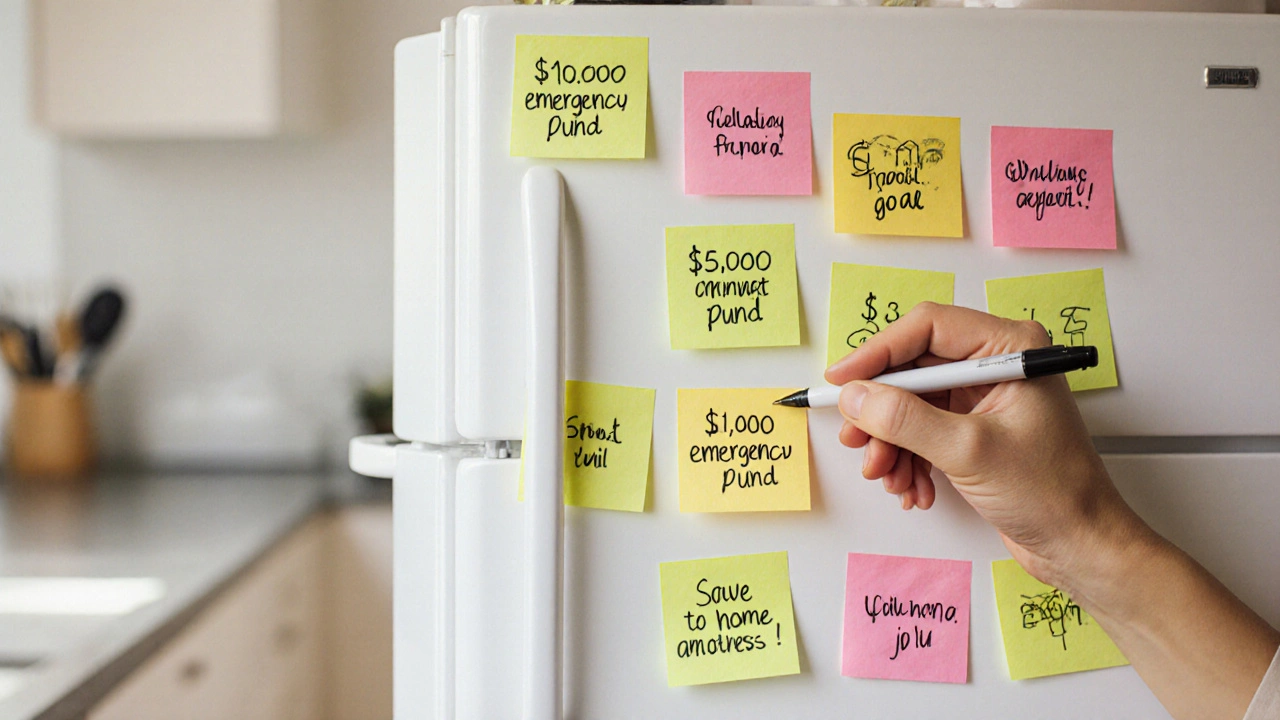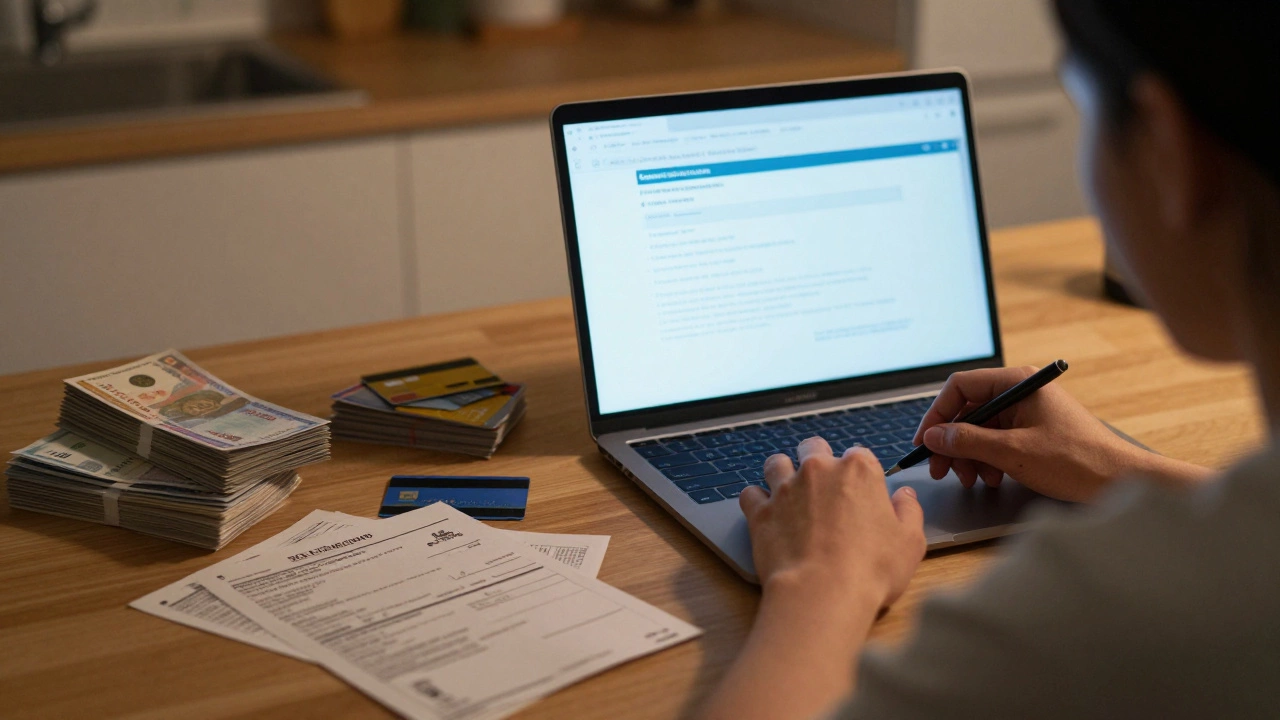Emergency Fund Calculator
How much do you need to save monthly to build an emergency fund? Enter your target amount and timeline.
Key Takeaways
- Start with crystal‑clear financial goals before you set a budget.
- Choose a budgeting method that fits your lifestyle - Zero‑based, 50/30/20, or Envelope.
- Track every dollar using simple tools or apps and adjust monthly.
- Build an emergency fund early to avoid debt when surprises strike.
- Avoid common traps like ignoring irregular expenses or treating a budget as a restriction.
Understanding Budgeting
When we talk about budgeting is the process of planning how to allocate your income to cover expenses, savings, and debt while aiming for financial goals, the goal isn’t to limit freedom but to give every dollar a purpose. By giving each dollar a job, you stop wondering where the money went and start deciding where it should go.
Set Clear Financial Goals
Before any number even enters a spreadsheet, define financial goals specific, measurable targets such as a $10,000 emergency fund, a debt‑free credit card balance in 12 months, or saving for a home deposit. Write them down, attach a timeline, and keep them visible - a sticky note on the fridge works as well as a phone wallpaper. Goals turn abstract income into concrete milestones.
Choose a Budgeting Method That Fits Your Life
There’s no one‑size‑fits‑all system. Below are three proven approaches, each with its own vibe.
Zero‑based budgeting allocates every dollar of your after‑tax income to a specific category, leaving a zero balance at the end of the month works well for detail‑lovers who enjoy tracking every transaction.
50/30/20 rule splits net income into 50% needs, 30% wants, and 20% savings or debt repayment is great for busy people who need a quick, flexible framework.
Envelope system uses physical or digital envelopes to earmark money for categories like groceries, entertainment, and transport appeals to visual planners who like seeing cash limits in real time.
Step‑by‑Step Guide to Start Your Budget
- List all sources of net income - salary, side‑gig earnings, dividends.
- Gather the last three months of bank statements to capture recurring bills and variable spending.
- Assign each expense to a category that matches one of your chosen budgeting methods.
- Allocate your income to those categories, remembering to prioritize your financial goals first.
- Record every purchase - the easier, the better. A note‑taking app, spreadsheet, or pen‑and‑paper works.
- Review at month‑end: compare planned vs. actual, adjust categories, and celebrate any surplus you can funnel into savings.
Tools to Simplify Tracking
Technology can make the process painless. Expense tracking apps mobile applications like Money Manager, PocketGuard, or the built‑in banking app that automatically categorize spend and show real‑time balances sync with your accounts, send alerts when you’re close to a limit, and generate visual reports. If you prefer analog, a simple notebook with pre‑drawn envelopes works just as well.
Common Pitfalls and How to Dodge Them
- Ignoring irregular expenses - subscriptions, car maintenance, or holiday gifts pop up yearly. Add a “miscellaneous” line with an average monthly amount based on past years.
- Treating a budget as a restriction - view it as a roadmap to the things you truly want, not a list of bans.
- Not updating the budget - life changes; revisit your numbers after a raise, a new job, or a move.
- Relying solely on credit cards for tracking - they can hide true cash flow; reconcile with bank statements weekly.
- Skipping the emergency fund - aim for three to six months of essential expenses before aggressively paying down debt.

Comparison of Top Budgeting Methods
| Method | Core Principle | Best For | Typical Setup Time |
|---|---|---|---|
| Zero‑Based | Assign every dollar to a category, leaving $0 unallocated | Detail‑oriented planners who enjoy granular tracking | 30‑45minutes the first month |
| 50/30/20 | Divide net income into 50% needs, 30% wants, 20% savings/debt | Busy professionals seeking a quick, flexible rule | 10‑15minutes |
| Envelope | Put cash or digital balances into labelled envelopes per category | Visual learners who like seeing limits in real time | 15‑20minutes |
Putting It All Together
Good budgeting advice isn’t a magic formula - it’s a habit loop. Start with a clear goal, pick a method that feels natural, track each spend, and review monthly. Over time the numbers become second nature, and you’ll see money moving toward the things that truly matter.
Frequently Asked Questions
How often should I revisit my budget?
A quick check weekly helps catch overruns early, and a full review at month‑end lets you adjust categories for the next cycle.
Can I combine budgeting methods?
Absolutely. Many people use the 50/30/20 rule for a high‑level view and apply the envelope system for discretionary categories like dining out.
Do I need an emergency fund before I start budgeting?
Ideally, yes - aim for three months of essential expenses. If you can’t build it right away, start a tiny “safety net” while you set up the rest of your budget.
What’s the biggest mistake beginners make?
Treating the budget as a restriction rather than a tool. When you focus on what you’re gaining - peace of mind, debt‑free life, savings goals - adherence becomes easier.
How can I stay motivated?
Celebrate milestones, no matter how small. Whether it’s paying off a $200 credit‑card balance or hitting a $500 savings target, reward yourself with something inexpensive but meaningful.









